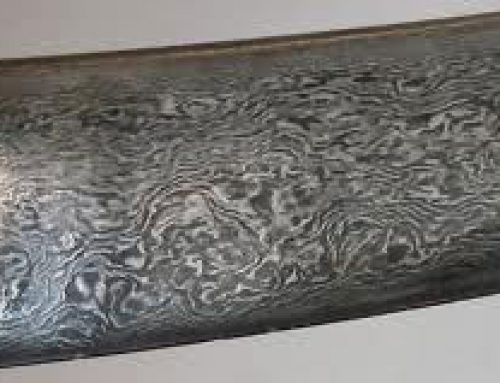
Hinduism: Arjuna fighting Karna, with Krishna as his charioteer (Duttapara Temple, ca. 1500s AD)
What does “Hindu” mean?
The word Hindu comes from the river Indus. So it just means the people who live near the Indus river (actually in modern Pakistan).
Indian environment
Religions of India
All our India articles
Harappans and Hinduism
The Harappa people who lived near that river about 2500 BC carved images of several different gods on their clay seals. We can’t read Harappan writing. So we don’t know what the Harappan people called their gods. But some of these gods look a lot like the later Hindu gods Shiva and Vishnu. So this may be the earliest part of Hinduism.
Who were the Harappans?
The god Vishnu
Yamnaya from Central Asia
About 1500 BC, when the Yamnaya invaded India, they brought with them their Indo-European sky gods. So the two cultures mixed. People in India began speaking Hindi, an Indo-European language. So their gods mixed too. Hinduism got some new gods, and also some new ideas.
Who were the Yamnaya?
Central Asian religion

Konarak Temple, India (1200s AD)
The Rig Veda
The first written evidence of Hinduism that we can read is the Rig Veda. That’s a long poem in Sanskrit probably composed about 1000 BC.
The Rig Veda
People sang or recited the Rig Veda for hundreds of years before it was written down around 300 BC. That’s when Indian people learned about the alphabet, during the Mauryan Empire.
Who invented the alphabet?
The Mauryan Empire
Animal sacrifice
The Rig Veda is a bunch of hymns (HIMS) (songs for the gods), magic spells, and instructions for what to say when you are sacrificing animals.
The Rig Veda mentions many different gods (polytheism). In the Rig Veda, most of the gods are male, and many of them are sky gods or weather gods like Indra, the god of rain, or Varuna, the god of the sea. People sacrificed goats and chickens to their gods.
Who is Indra?
What about Varuna?
The Rig Veda also tells us that people sometimes got in touch with the gods by using a drug, soma, which made them hear the gods talking to them. (We don’t know now what soma was made of.) People also thought of both soma and the fire of sacrifice (Agni) as gods themselves.
Dharma and Karma
About 600 BC, the idea of reincarnation became more and more common among Hindus. Most people began to think that after you died you would be reborn into another body. If you had been good, and lived in accordance with dharma, you would get a good body, maybe a princess. If you had been bad, and piled up a lot of karma, you would come back as a cockroach or a rat.
What is dharma?
And what’s karma?
Reincarnation and Nirvana
Gradually people began to hate the idea that you had to be endlessly reborn in different forms. They wanted to get free of the wheel of rebirth, and just be left alone in Nirvana. People began to think that sacrificing animals was a burden on your karma, or fate, that prevented you from getting free of reincarnation. So animal sacrifice became less popular (following a slightly earlier trend in Iran and China).
The end of animal sacrifice
What is Nirvana?

Kali (from Kalinga in Eastern India, about 1000 AD)
Brahma, Vishnu, and Shiva
Around 300 BC, the Mauryan Empire united India and the Silk Road increased trade. People began to worship new gods, who didn’t need animal sacrifices. These new gods were Brahma, Vishnu and Shiva.
The god Brahma
Who is Shiva?
Generally people gave Vishnu and Shiva flowers, incense, prayers, fruit, or music, but they didn’t kill animals for them. They began to worship Brahma, Vishnu, and Shiva more, and paid less attention to their old gods Indra and Varuna and the others. One example where they’re sacrificing fruit is the story of how Ganesh cursed the moon.
How Ganesh cursed the moon
The god Ganesh
The Mahabharata and the Bhagavad Gita
About the same time, somebody wrote down a long poem called the Mahabharata. One part of this poem, the Bhagavad Gita, discusses what it means to do your duty – to live a good life – and it is an important part of Hindu thought.
The Mahabharata
The Bhagavad Gita
The Mother Goddess
Much later, between 400 and 650 AD, at the end of the Gupta period, another new god came into Hinduism. This new god was a Mother Goddess. Cows were sacred to this Mother Goddess, and so Hindus gradually stopped eating beef. Like Vishnu and Shiva, the Mother Goddess had many incarnations and many names.
Food in medieval India
Where do cows come from?
Parvati, Uma, and Annapurna were beautiful goddesses, who brought blessings to people. But other incarnations were called Kali, Chandi, Durga or Chamunda, and these goddesses were terrible giants with black skin, huge red tongues that stick out, and fierce tusks. These had many arms and each arm held a weapon, and they wore necklaces of skulls or human heads. But even though these goddesses were so scary, people sacrificed fruit and grain to them, not meat.
Did you find out what you wanted to know about the history of Hinduism? Let us know in the comments!
Learn by doing – Hinduism
Learn by doing: Diwali
More about Indian religion
Bibliography and further reading about Hinduism:





great words
Thanks! I’m glad you liked the article.